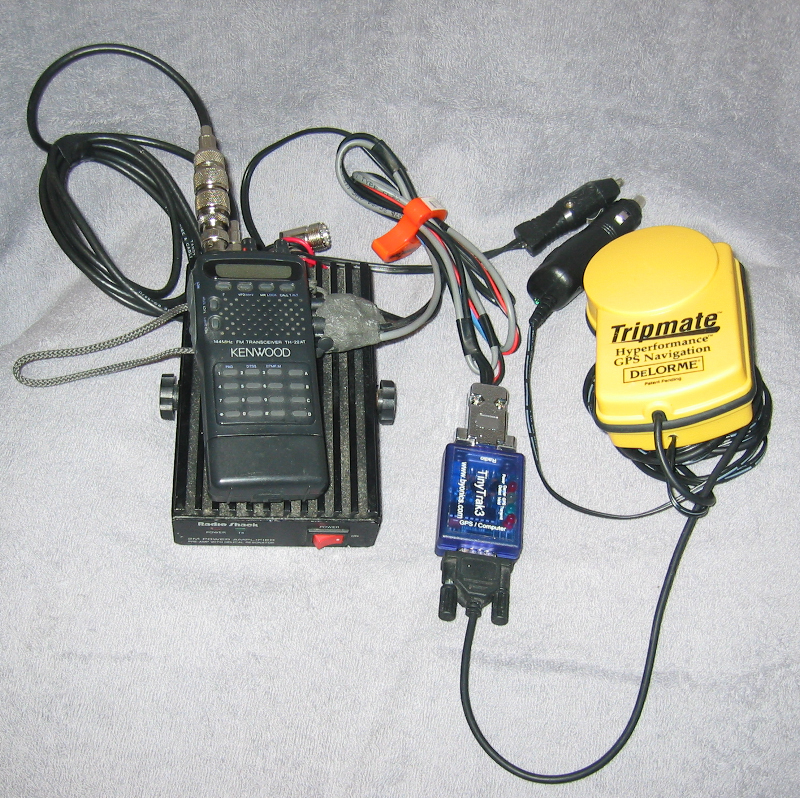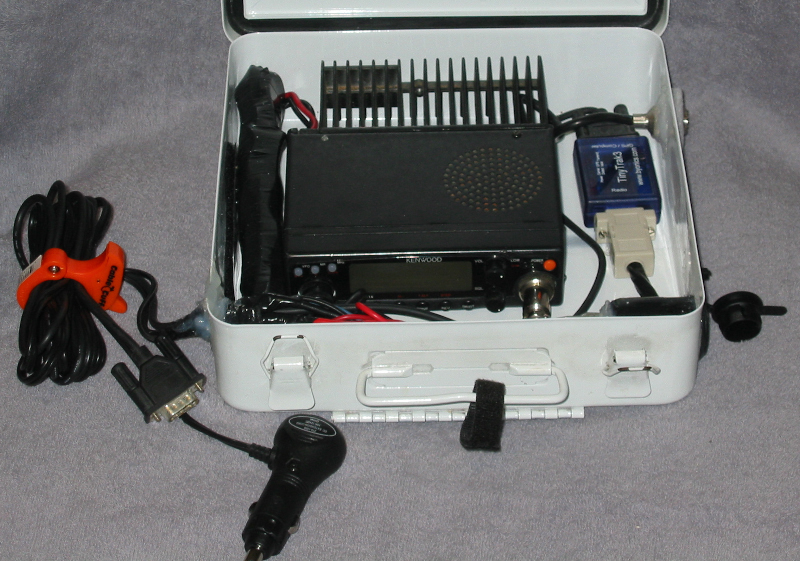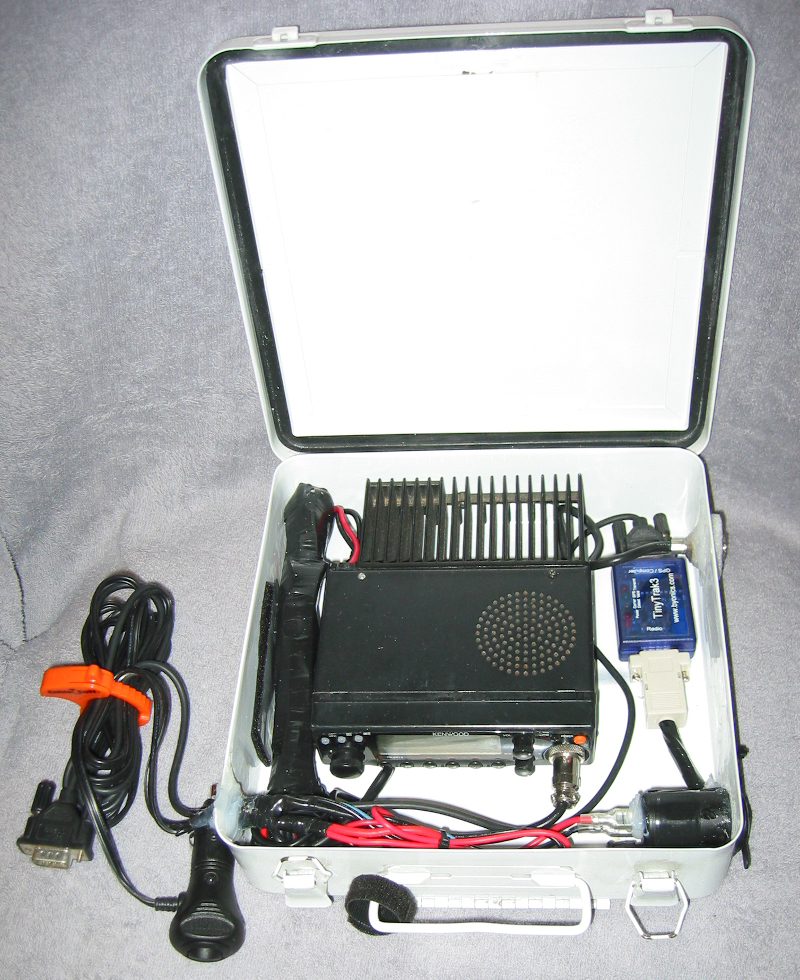N3UJJ's APRS Project
Part 1
How I got started with APRS
aka
What worked and what didn't for me
(your results may very)
I stumbled onto APRS when I was looking for more information on a problem I was having with the GPS unit I was using (the DeLorme TripMate) for my Boating & WarDriving hobbies.(for those of you with the same problem the fix is here)
I had been a "Ham" (Amateur Radio Operator) for over 20 years, but hadn't been on the air in a while.
A Google search on my GPS unit came up with a link to Byonics, and that's where this project started.
Byonics sells electronic kits for Ham Radio Operators, and they had something called TinyTrak3 (an APRS encoder) which really sparked my interest, (it didn't hurt that the guy that invented APRS lives 15 miles away from me). The more I read the more excited I got, a GPS tracking unit that would fit in an Altsoid Mints tin enclosure, this sounded like something out of James Bond, all in kit form that I could build, the more I read the more I wanted to do this.
I already owned several HT's (handheld ham radios, the size of walkie talkies), I was a licensed Ham Radio Operator and I had a GPS so it looked like the most "bang for the buck" was the TinyTrak3.
I bit the bullet and ordered the TinyTrak3 and the cables I needed to interface to one of my HT's. When they arrived I set everything up and went out for a drive, I couldn't wait to get home and see my APRS unit show up on FindU.com.
See the picture below for Version 1 of my APRS Tracker.... the rest of the story continues after the picture.

Well.......
It didn't work, but why?
After several hours, I realized that I wasn't reaching the Digipeater in my area (the transmitters that that re-transmit your signal), that was 6 miles away. I guess I was a little confused, the pocket tracker puts out under 1/2 watt, so I figured that my 5 watt HT would be more then enough. Well I was in a rural area (with lots of trees), so I figured, let's dump the "rubber duckie" and put a real antenna on the HT. I installed a 5/8 wave mag-mount (on the top of my SUV) and now I started making it to the Digipeater, but I could not get into the digipeaters consistently.
Thinking back to StarTrek, the words "we need more power Scotty" came to mind, and that takes us to my APRS project "Part 2".
Recap:
When you can hit the digipeaters APRS works GREAT!!!
In a rural area (with lots of trees), 5 watts and a "Rubber Duckie antenna just won't cut it. (at least for me, you results my vary)
Part 2
aka
We need more power Scotty.
This is part 2 of my APRS Project, and at this point I'm going to make APRS work if it kills me.
I felt I needed more power, and I happened to have an old 2 meter amplifier laying around somewhere.
The 10 year old Radio Shack amplifier powered up and worked, 5 watts in and 30 watts out, but would it solve the problem?
The first test run was a SUCCESS !!! I could hit every Digipeater from my home to work. I took the APRS rig boating, and tracked my boat trip. This was really cool, I could go to findU.com and see bread crumbs of my travels, all kind of neat tracking stuff that you would have to normally have to pay $45 to $60 a month to have. Now all I needed to do was package this wiring mess up (the picture doesn't show the wiring for the amplifier).
I couldn't wait to test it on a trip to Charlotte NC. (summer of 2005).
Story continues after the picture.
 My trip to North Carolina was a great test of my setup, there were areas where I was 15 to 20 miles away from the nearest Digipeater, and the 30 watts wasn't making it, it looked like I still needed "more power" to hit all the repeaters (sigh), but I did have a 50 watt 2 meter mobile unit that I wasn't using.
So here is a re-cap of the project so far:
30 watts really made a difference (over 5 watts), I could hit most digipeaters in my travels, but I wanted to be able to hit digipeaters 90% of the time.
I needed to find a way to "package" everything (all the wiring was a mess).
Part 3
In Work


|

